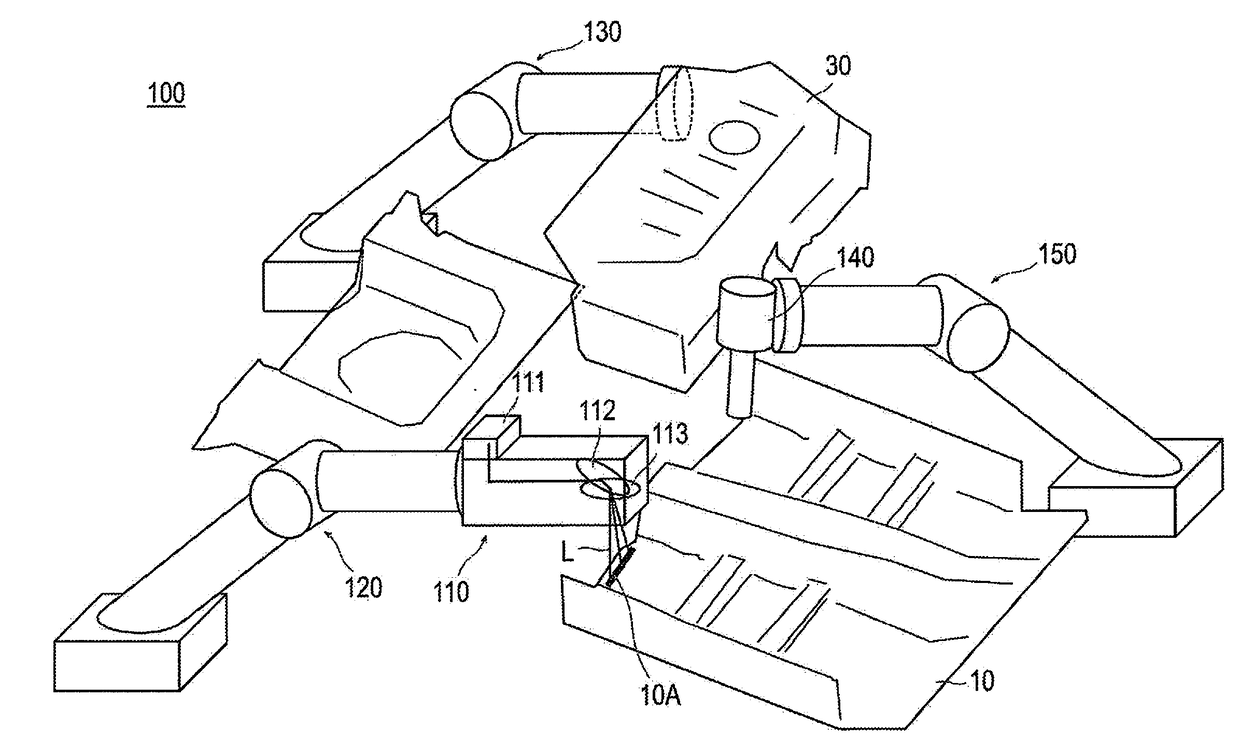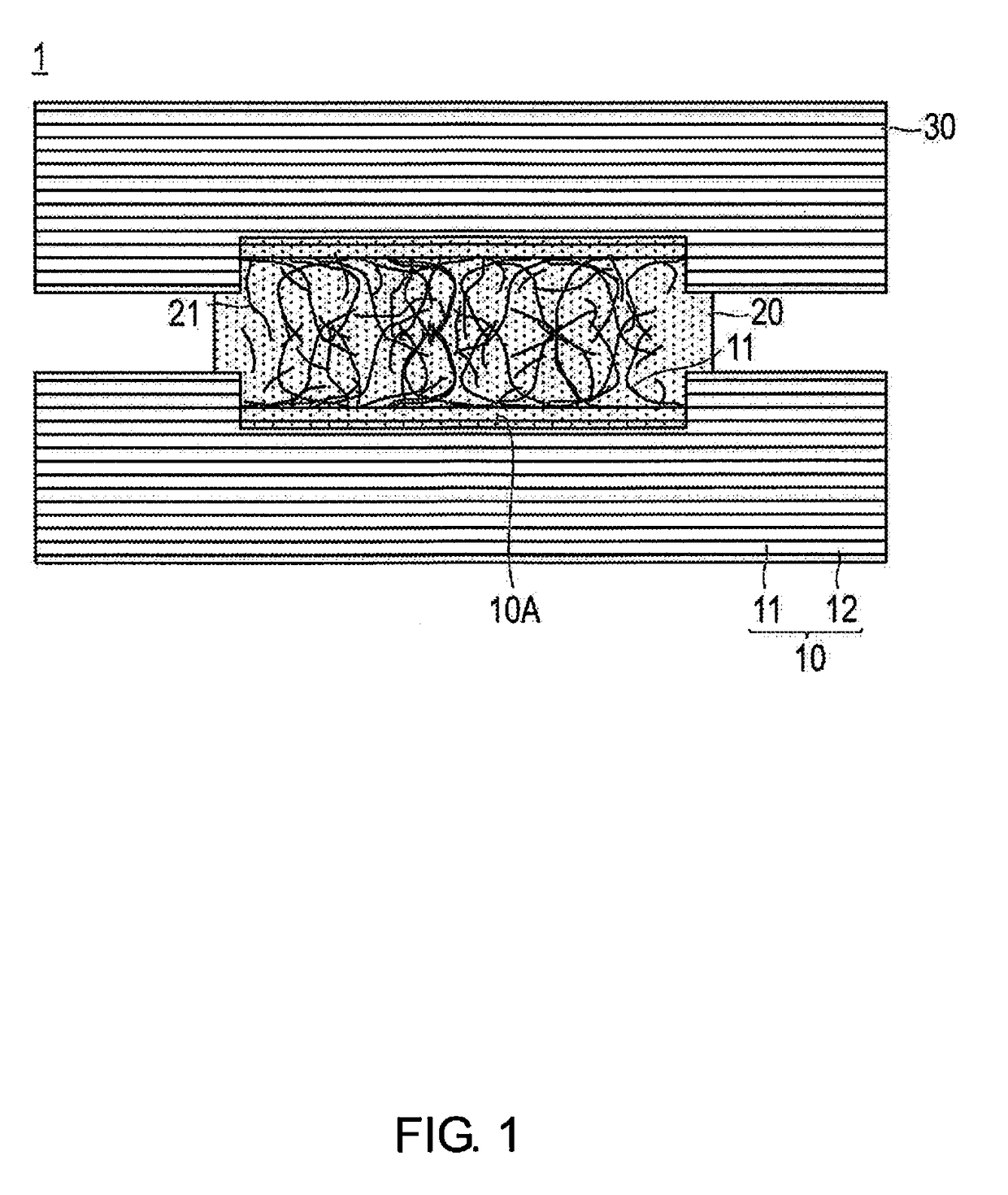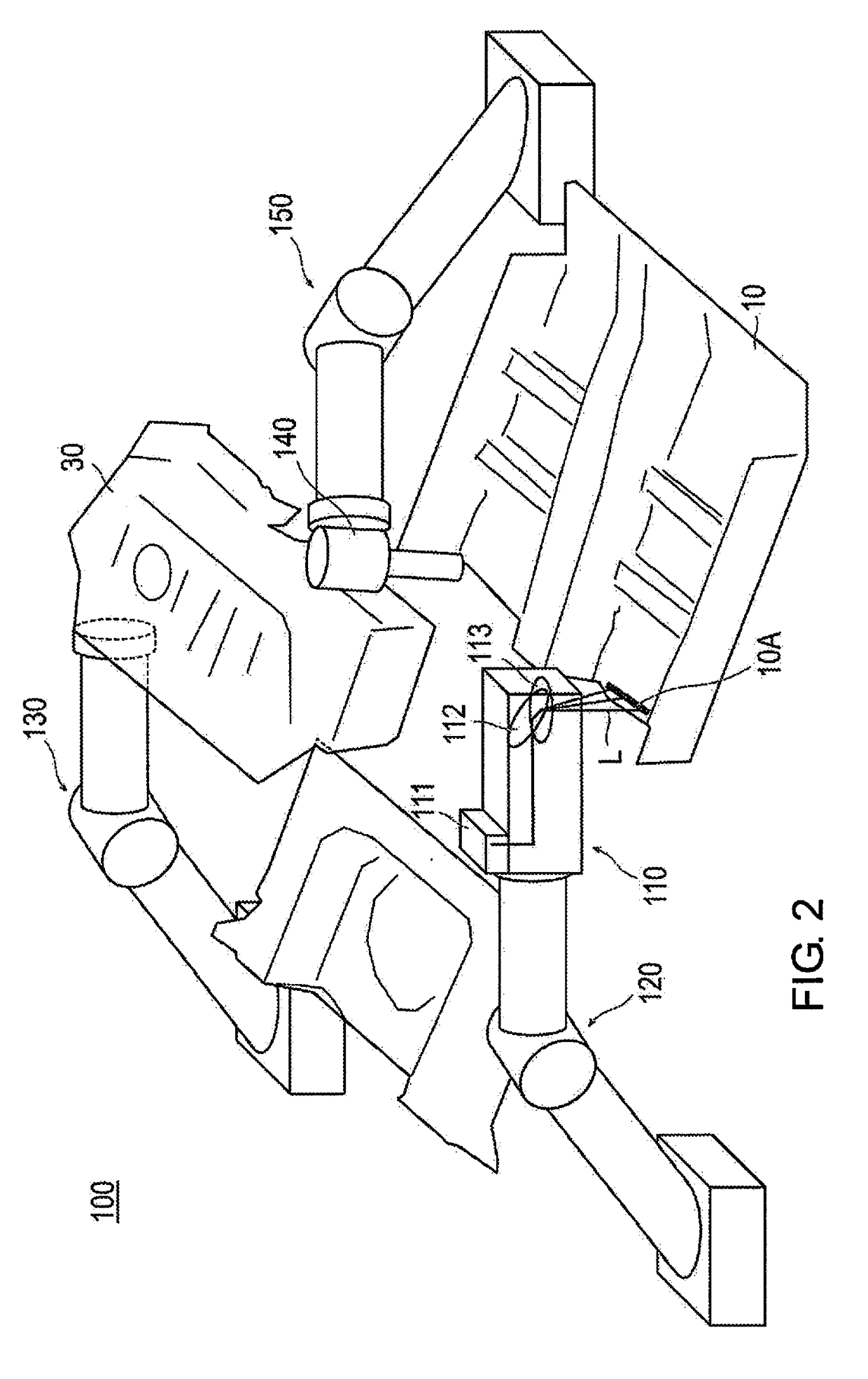Method for modifying surface of composite material, method for bonding composite material, composite material, and bonded structure
- Summary
- Abstract
- Description
- Claims
- Application Information
AI Technical Summary
Benefits of technology
Problems solved by technology
Method used
Image
Examples
Embodiment Construction
[0028]Embodiments of the present invention will be explained below, with reference to the appended drawings. In the explanations of the drawings, the same elements are given the same codes, and overlapping explanations are omitted. Dimensional ratios of the drawings are exaggerated for convenience of explanation and may be different from the actual ratio.
[0029]FIG. 1 is a schematic view illustrating the bonded structure 1 according to an embodiment of the present invention. FIG. 2 is a view illustrating the method for modifying the surface of a composite material 10 according to the present embodiment. FIG. 3 is a flowchart illustrating the method for bonding a composite material 10 according to the present embodiment. FIG. 4 is a schematic view illustrating a state in which a reinforcing base material 11 is exposed. FIG. 5 is a schematic view illustrating a state in which the reinforcing base material 11 is fluffed. FIG. 6 is a schematic view illustrating a state in which laser L i...
PUM
| Property | Measurement | Unit |
|---|---|---|
| Structure | aaaaa | aaaaa |
| Area | aaaaa | aaaaa |
Abstract
Description
Claims
Application Information
 Login to View More
Login to View More - Generate Ideas
- Intellectual Property
- Life Sciences
- Materials
- Tech Scout
- Unparalleled Data Quality
- Higher Quality Content
- 60% Fewer Hallucinations
Browse by: Latest US Patents, China's latest patents, Technical Efficacy Thesaurus, Application Domain, Technology Topic, Popular Technical Reports.
© 2025 PatSnap. All rights reserved.Legal|Privacy policy|Modern Slavery Act Transparency Statement|Sitemap|About US| Contact US: help@patsnap.com



